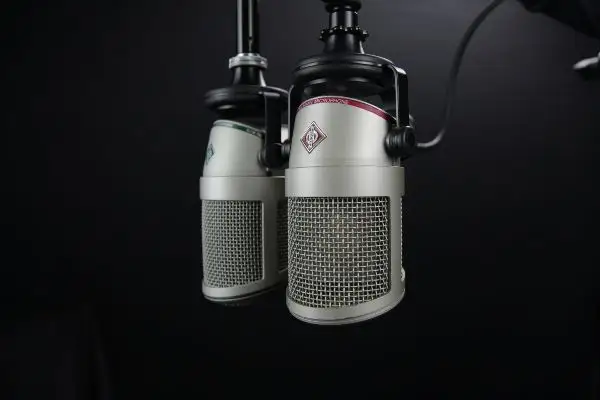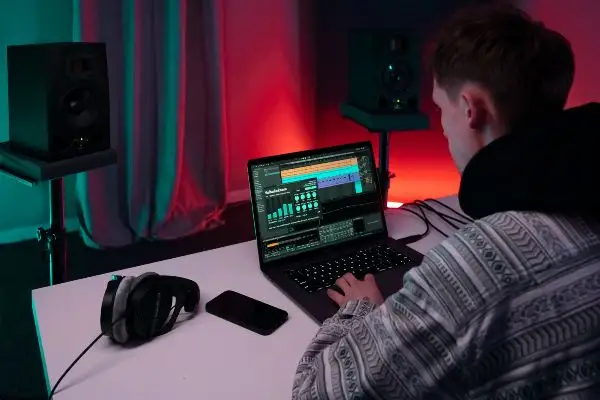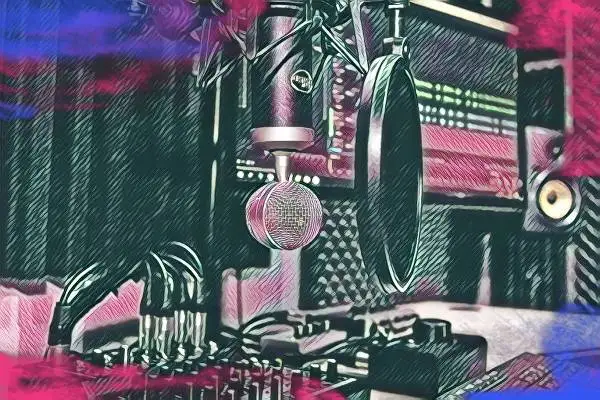Editing vocals is one of the most important parts of the production process. A vocal performance serves as the strong foundation for a song, so when you edit vocals, you're creating a platform for the rest of the production.
Thankfully, comping vocals is a lot easier than you might think. Below, we'll share our comprehensive guide to vocal editing so that you can convert a raw performance into a quality level recording with any vocalist. Let's jump into it!
Editing Vocals From Start To Finish
Without further ado, here are the essential steps to editing vocals. Note that every vocal mix will require a different approach, but these strategies are a great place to get started.
1. Make Sure You Have Enough Source Material
One of the common pitfalls of any novice engineer is not having enough recording material to produce with. If possible, make sure you have at least 3 solid lead vocal takes before moving to the vocal editing process. You should also have plenty of raw track takes of backing vocals, adlibs, and harmonies.
This step is important so that you're able to comp or compose a strong vocal track properly. If you don't have enough material to source from, it's going to be more difficult to put together a strong vocal performance.
Note that the number of takes needed for a solid vocal session will vary greatly based on your vocalist. Some vocalists are able to churn out a solid performance every time, while others might need a bit more reassurance and patience.
A Great Mix Starts With A Stellar Vocal Recording

Don't forget that proper equipment choices can make or break your sound. For instance, if you're capturing a pop vocal that should rise above a dense mix, you'll want to use something like a condenser mic that helps capture the high-end frequencies.
2. Comp Your Vocal Takes
Once you have a variety of vocal takes to choose from, you can create a comp track. A comp track is just another audio track where you can stitch different vocal takes together. You'll want to keep the vocal performance as consistent as possible, or source mainly from the best overall take that stands out amongst the rest.
This will help to keep the vocal performance consistent and cohesive for the listener. This can be done during post-production, or you can work directly with your vocalist to pick and choose different sections together while comping vocals.
Try to only comp a couple of seconds at a time so that your ears have a chance to properly evaluate each vocal take. You can also go by musical phrases to help with consistency.
Mind Your Gain
When editing vocals, or really any parts of your mix, you'll want to keep things like clip gain in mind. This is a crucial step because if your processed audio is too loud, you won't have enough headroom to create layers in the mix or move on to mastering. Generally speaking, you should leave about 3 to 6 dB of headroom throughout the vocal editing process.
3. Fix Any Vocal Timing Issues
Most vocalists should be able to sing fairly on the beat, but sometimes, that timing can be cleaned up for the better throughout the mixing process. If you notice any obvious timing issues, feel free to isolate the applicable section and adjust to the grid in your DAW as needed. Not every beat needs to be incredibly clean-cut, but any timing inconsistencies shouldn't be obvious when listening back.
For more drastic changes, you can utilize warp toggles or the elastic audio feature if you're working out of Pro Tools.
4. Eliminate Excess Breaths and Create Fades

When mixing vocals , it's common practice in pop music and other genres to remove sounds of the singer taking in audible breaths of air. You can do this by manually editing vocals, and then creating fades in between the edited parts for a more cohesive sound.
In some cases, a gain plugin might help. These plugins can be used to block out noise below a set threshold. You can play around to find the best settings to address breath noise in the mix.
You'll also want to add short fades in between short phrases that might create an obvious contrast in the mix for the listener. In some cases, you might leave a couple of breaths to preserve the character of the original performance.
5. Look Out For Sibilance
Sibilance refers to any harsh "S", "P", or "T" noises that come through in the mix. These sounds can be reduced during the recording process utilizing tools like a pop filter , but sibilance might still pop out with certain phrases depending on the singers.
These audio pops may be addressed utilizing a de-esser . De-essers are essentially compressors that target the high-end frequency range where sibilance noises tend to reside. You can also try your hand at reducing these problematic frequencies with the help of an EQ.
6. Remove Any Excess Noise
Before you do any additive processing (such as adding effects , boosting certain frequencies, etc.) it's paramount that you clean up your vocal as much as possible. The reason why you focus on subtractive processing first (De-essing, EQing, etc.) is because additive processing will build off of what you've already created, for better or worse.
Before proceeding to the next step, make sure your vocal is as clean as possible and that you've eliminated any excess noise. Note that the best way to clean up muddy recordings is to have a clear recording, to begin with. If your audio sounds too noisy, it might be worth jumping back into the studio for another session.
Generally speaking, the less processing you have to use on recorded tracks, the better. You can also use a tool like a dynamic EQ to help cut out certain frequencies in response to another.
7. Use Pitch Correction
Using pitch correction software isn't "cheating", it's the industry standard. In fact, most professional songs use some sort of pitch correction. Most listeners just don't know how to detect it. There are even exceptions to that rule, as emerging hyper pop and emo rap genres tend to utilize detectable autotune as a signature component of their sound.
In any case, don't feel guilty about utilizing pitch correction. Light pitch correction can help take a strong vocal to a near-perfect one, and make music more sonically pleasing for the listener.
8. Shape For Tone
You can also do considerable tone shaping with the help of an EQ or filter. For instance, some mixing engineers might use a high pass filter , to cut out some of the low-end vocal information that isn't needed. A shelf filter might also be used to emphasize the most sonically-pleasing portions of a vocal performance.
9. Compress The Vocal

Compression is one of the important effects for vocals, so much that it's not uncommon to have multiple compressors on a single vocal. Essentially, a compressor reduces the loudest peaks and amplifies the lowest sounds of a piece of music.
This can help create a sense of consistency for the listener. Some compressors are used exclusively for smoothing out the perceived amplitude of a track, while others help shape the sound.
You might use your first compressor to tame peaks, and the following to color the sound or further shape transients. Some genres might lend to a more compressed sound. In which case, you might want to adjust the attack time to have a quick, fast attack so that the compressor kicks into gear as soon as the audio hits the set threshold.
10. Consider Adding Effects
The final stage of the editing process is adding effect embellishments to an already stellar vocal take. Your processed vocal should stand on its own at this point, but effects can be used to enhance the listening experience or help the performance sit better within the mix. Once you've added basic processing to your vocal, consider adding in some of the following effects:
Reverb
Reverb is a standard time-based vocal effect that creates artificial reflections utilizing the raw audio. The more reverb you add to vocal tracks the more washed out/dreamy the sound.
Delay
Delay is another effect commonly used on vocals that can help create seamless transitions between sections of your song or give your vocals a bit more presence.
Distortion
Heavy distortion might be used in rock or rock adjacent genres, but many mixing engineers utilize distortion to create a warmer presence in a mix.
11. Make Sure Your Vocal Track Melds With The Instrumental
When you listen back to your vocal edit, you'll want to make sure it's cohesive and gels with the rest of your music. A clean vocal recording is great, but if it doesn't work within the context of the rest of your song, you have an issue.
Your vocals should live in the style of the rest of the song. You may need to play with different effects and processing modes to get your vocal performance to where it needs to be. When in doubt, listen to a reference mix of a similar song to hear how the engineer approached the vocal.
With a little patience and practice, vocal editing will be an absolute breeze. Hopefully, these strategies make it easier for you to create a cohesive vocal mix that emphasizes your singer's natural talents. Happy mixing!





